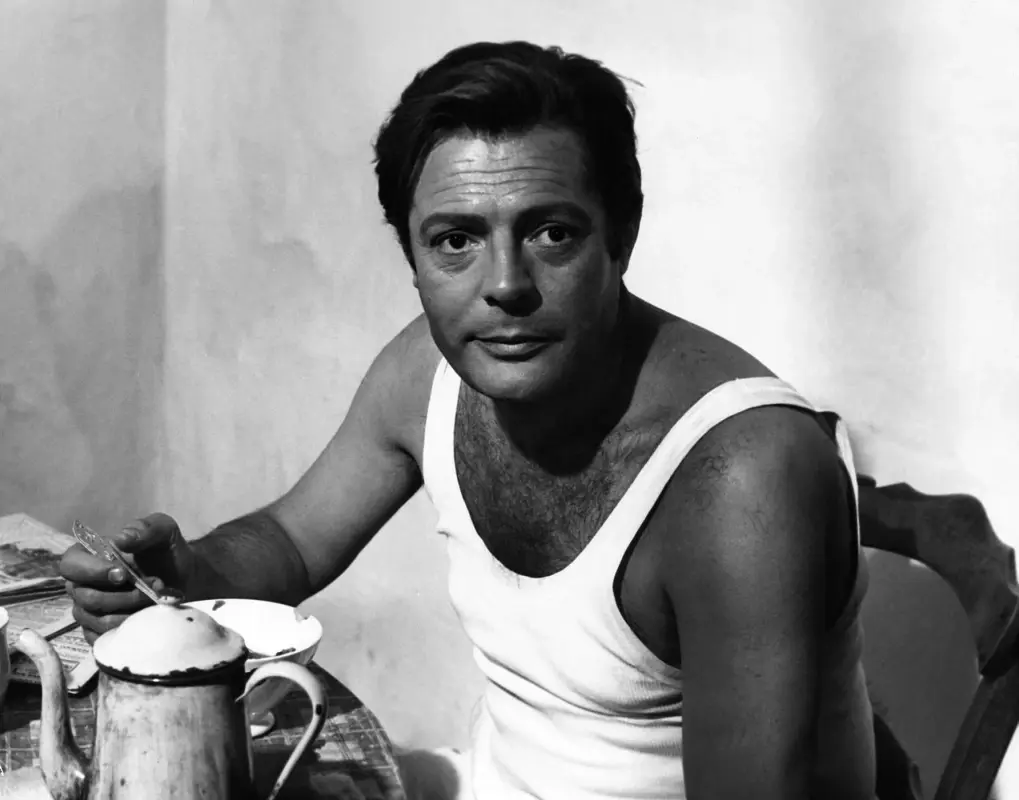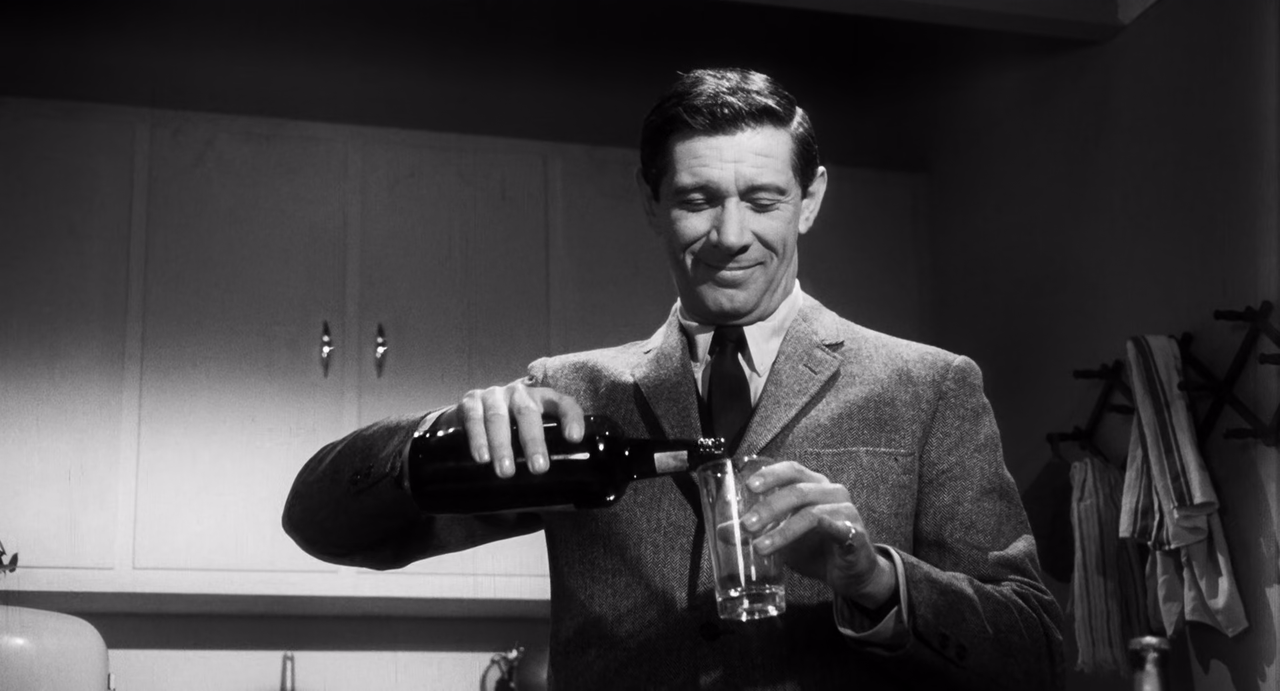“It isn't Jesus. It's just a fella.”Whistle Down the Wind (Bryan Forbes, 1961)
Jul
9
white bread

A child grabs a thick slice of white bread while the cutlery on her plate indicates she's finished eating. DP: Arthur Ibbetson.
– Charlie Bostock
1960s
“Good night, Gentle Jesus. Sleep well.”Whistle Down the Wind (Bryan Forbes, 1961)
Jul
9
Barn Day

The man (Alan Bates) in the barn surrounded by little children. The older girl in the light coat, Kathy, is played by Hayley Mills, author Mary Hayley Bell's daughter. DP: Arthur Ibbetson.
In the barn of a remote Lancashire farmhouse, three children stumble upon a stranger. Confused, they conclude that the fellow must be the Second Coming of Christ. In the world of the adults, a man is wanted by the police.
– Charlie Bostock
“Jesus Christ has promised to forgive you 490 times, whatever you have done… because those were his words. But about the 491st time… He has given no words. None at all.”491 (Vilgot Sjöman, 1964)
Jul
7
Global Forgiveness Day

One of the juvenile delinquents carving a simple arithmetical calculation into a desk during the Reverend's lecture about forgiveness. DP: Gunnar Fischer.
Early 60s, Sweden. A social experiment. Six hopelessly criminal juveniles are packed in a guesthouse – cynically named Objectivity – and loosely supervised by social workers and a reverend. The public servants speak of a new lease on life, God's servant of how Jesus forgives; all speak on their own behalf. We follow the young men closely and sense their need to break out, to be young, to be out of that house. We learn that their world, in or out, is eternally equally irrelevant.
– Reverend Mild
Vilgot Sjöman's 491 is an extremely, bleak, aggressive, and hopeless depiction of youth in postwar Sweden. Forgiveness is a tool of power, a method of control. And as empty as a repetitive lecture.
Lo straniero [The Stranger] (Luchino Visconti, 1967)
Jul
3
soup

Arthur Meursault (Mastroianni) eating from a cracked bowl. DP: Giuseppe Rotunno.
O Bandido da Luz Vermelha [The Red Light Bandit] (Rogério Sganzerla, 1968)
Jul
1
prairie oyster

The bandit (Paulo Villaça) cracks a raw egg over his liquid breakfast while one of his female victims (Sonia Braga) is on the phone beside him. Her cigarette smokes itself and the kitchen table is packed with drugstore items. DPs: Peter Overbeck & Carlos Ebert.
“Things last as long as they last.”Peppermint Frappé (Carlos Saura, 1967)
Jun
30
Drive Your Corvette To Work Day

Producer Elías Querejeta (far left) and others pushing Geraldine Chaplin character Elena's Chevrolet Corvette C1. Behind the wheel actor José Luis López Vázquez (Julián). DP: Luis Cuadrado.
A chance encounter with a blonde drummer during the Holy Week in the village of Calanda leaves a deep impression on Julián (José Luis López Vázquez). When years later he reunites with his childhood friend Pablo, he finds that Pablo is married to bubbly cosmopolitan Elena (Geraldine Chaplin), the spitting image of the elusive drummer. Infatuated he tries to court her, but Elena sees nothing in the drab radiologist. Julián then turns his attention to his shy assistant Ana (also Chaplin) and grooms her into becoming the two unattainable women.
– Pablo
Saura's Peppermint Frappé takes #Hitchcock's Vertigo (1958) – indeed the peppermint green of the drink is an homage – with a twist of #Buñuel and serves it over an anti-#Francoist tale of self-doubting machismo obsessing over The Other. Even Elena's car, American instead of a much more obvious European model, dismisses fascist Spain's perceived superiority. Indeed the Generalisimo drove a Cadillac.
Le trou [The Hole / The Night Watch] (Jacques Becker, 1960)
Jun
25
care package

Butchering a care package – butter, sausage and other joys of life – for contraband. DP: Ghislain Cloquet.
“All these fancy electronics, they're all right in their place, but not for anything practical.”Le procès [The Trial] (Orson Welles, 1962)
Jun
23
National Typewriter Day

Josef K. (Anthony Perkins) crossing an enormous open office space. The endless room is filled with clerks, identical desks, telephones, and typewriters. DP: Edmond Richard.
Office worker Josef K. is brought to trial and at no point told what he is accused of, if anything. Orson Welles' Le procès is an adaptation of Franz Kafka's unfinished 1914/15 novel Der Prozess. The manuscript, guarded from Kafka by his friend #MaxBrod in an attempt to keep the self-doubting author from destroying his work, was against K's wishes posthumously (re)assembled by Brod without the latter knowing the intended sequence of the loose pages nor what chapters were finished.
– Uncle Max
The story holds up in its vagueness thanks to the quirks of #Kafka's Brotberuf; Franz K. was a trained lawyer, working as an insurance agent in an impossible artifice world of reports and precise wording. Within its extended logic, a man can get perplexedly lost, either within the walls of his #office or one's bed.
“Hello. My friend Jacques Becker recreated a true story in all its detail. My story. It took place in 1947 at La Santé prison.”Le trou [The Hole / The Night Watch] (Jacques Becker, 1960)
Jun
19
International Box Day

The prisoners keep themselves occupied with making cardboard folding boxes. The second man from the right is the novel's author and real-world (ex-) inmate José Giovanni aka Jean Keraudy as Roland Darbant. DP: Ghislain Cloquet.
Inmates preoccupy themselves with making cardboard boxes. While working together, talking, gaining trust, plans for an escape unfold.
– Jean Keraudy as himself
Le trou is based on a real prison escape and introduced by one of the men involved, Jean Keraudy.
“I don't find you the least bit amusing, Lieutenant Whatever-your-problem- is!”Who Killed Teddy Bear (Joseph Cates, 1965)
Jun
3

A square 1960s man – Jan Murray as Lt. Dave Madden – smugly pouring himself a stiff drink. DP: Joseph C. Brun.
– Norah Dain